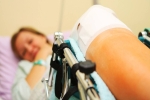The anterior cruciate ligament (ACL) is one of two ligaments found in the middle of the knee. It connects the thigh bone to the shinbone and provides stability in the knee joint by helping prevent forward and backward motion.
An ACL tear is a common injury in sports and usually occurs when a player gets struck in the knee, overextends their knee joint, or quick stops and changes direction while running, turning, or landing from a jump.
In the past, these injuries would often end an amateur or professional athlete’s career. Thanks to advancements in medical science and technology, ACL injury recovery time has shortened significantly and increased the likelihood of a player returning to peak athletic performance.
How Fast is Recovery From ACL Injury?
Unfortunately, ACL injuries don’t heal by themselves. The ACL doesn’t have any blood vessels, which means it cannot repair itself when it tears. In some cases, nonsurgical rehabilitation is possible for minor tears. For full ACL tears, the only way to repair the injury is through surgery and post-surgical rehabilitation.
Once the tear has been successfully repaired with a graft, patients will require extensive rehabilitation before returning to intense physical activity. This is because it takes a considerable amount of time before the body recognizes the graft, and it becomes part of the body as a ligament—a process known as ligamentization.
After the surgery, patients must also strictly adhere to the recovery protocols to ensure optimal results. Generally, recovery from a torn ACL will take approximately nine to ten months to ensure total recovery. While some exceptional athletes may be able to achieve complete recovery in as little as six months, a recovery period of at least eight to nine months is a more realistic ACL injury recovery time.
Timeline For Recovery From a Torn ACL
Clinicians follow ACL Reconstruction Physical Therapy Protocols after ACL surgery is performed to facilitate the recovery process and ensure the complete rehabilitation and recovery of the patient. These protocols have been designed to restore balance and allow the body to recover its full range of motion following the surgery.
The following is a sample timeline of recovery and post-surgical ACL injury recovery exercises recommended to aid the patient’s recovery:
Weeks 0-2 (Commencement Stage)
This is a critical stage in the recovery process. The main goal immediately following surgery is to reduce and control pain and swelling while also helping the body achieve and maintain a full range of motion, starting with 0-90° during the first week and attempting to reach 0-120° by the end of week 2.
Weeks 2-12 (Build Stage)
The second stage focuses on building upon the results made from the first stage. Aside from returning the knee’s full range of motion, there will be a strong focus on bringing back knee strength and improving flexibility.
During this stage, exercises performed during stage 1 should still be performed to build mobility and strength gradually. But more emphasis will be placed on hamstring and quadricep exercises as the core elements of the build stage. These will help build the strength of supporting muscles that have deteriorated after the surgery.
Weeks 12-16 (Advance Stage)
About 12 weeks after the surgery, the advanced stage of recovery will begin. During this time, the level of complexity and intensity of ACL injury recovery exercises will be heightened to improve knee stability and balance. While exercises for the previous stage will still need to be performed, they will be taken to the next level of development.
It’s normal for enthusiasm and motivation to wane around this time. However, it is crucial to keep up with the program to continue to achieve progress and avoid prolonging the timeline for recovery from a torn ACL.
Weeks 16-24 (Preparation Stage)
The fourth stage is known as the preparation stage, as it is during this stage that the patient will start to perform normal day-to-day activities and sporting activities. Rehabilitation will also ramp up from simple motion activities to non-contact drills, such as kicking footballs, shooting basketballs, basic throwing and catching baseballs, and hitting hockey pucks and tennis balls.
Most patients tend to overexert themselves during this stage due to excitement over their impending return. However, it is important to remain cautious at this stage to avoid adding to the ACL injury recovery time.
Weeks 24 - 48 (Return to Full Normal Activities)
Approximately six months after surgery, the patient may be ready to return to their full normal activities given that there is no more swelling in the knee and the legs are showing excellent quadriceps strength and full knee movement.
At this point, the patient will have already shown considerable progress and is nearing a potential return to play. But a full assessment is still necessary in order to determine readiness in order to avoid risking reinjury.
Get Expert Help For Complete ACL Injury Recovery
The timeline for recovery above provides an outlook into the recovery process of a patient dealing with an ACL injury and their journey to recovery after surgery. Depending on several factors, this timeline may look different for each individual and may be shorter or longer.
When recovering from an ACL injury, it is vital to remain patient and compliant with the recovery protocols to achieve the best outcome. If you feel frustrated or overwhelmed, don’t hesitate to communicate with your primary care provider so that they can help you address your concerns.
If you are dealing with an ACL or hip injury and want to know your options, call the offices of Dr. Benjamin G. Domb to get expert advice.

